30/04/2025 09:24 AM
Understanding the Parts of a Garden Gate
A well-constructed garden gate does more than mark the entrance to your outdoor space. It provides security, privacy, and aesthetic value. Whether you’re choosing a new gate or maintaining an existing one, understanding its components can help you make informed decisions and spot potential issues early. Let’s take a closer look at the essential parts of a garden gate, especially focusing on fixings and fittings such as hinges, latches, and posts.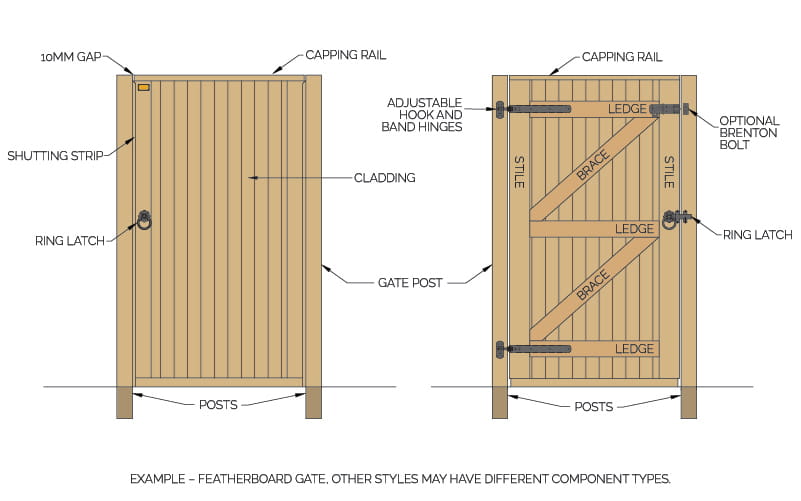
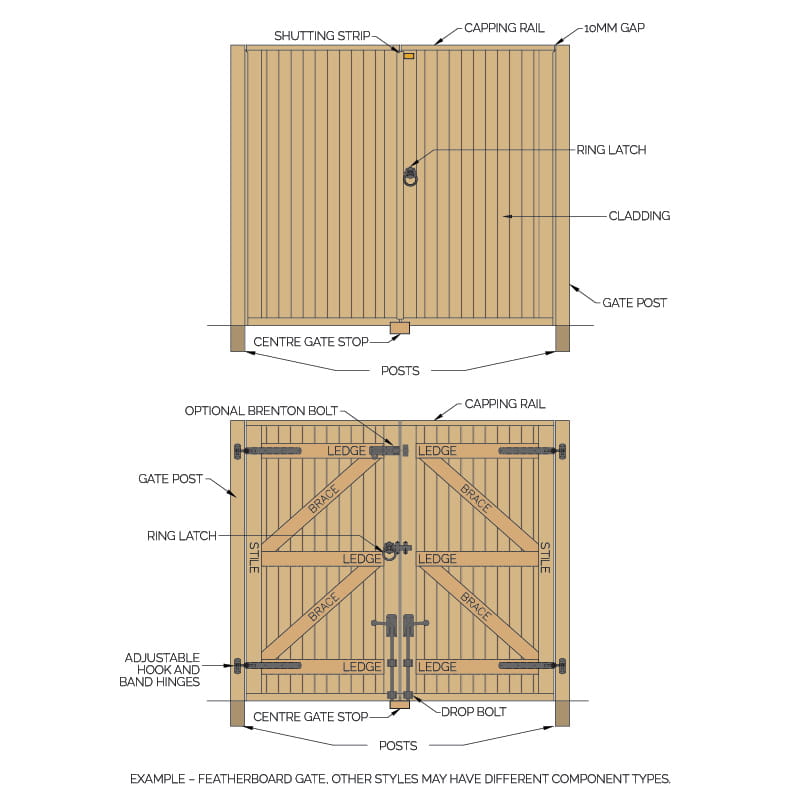
1. Gate Leaf (Gate Panel)
This is the main body of the gate – the part that swings open and shut. It can be made from various materials such as timber, metal, or composite. At Jacksons Fencing, our timber gate panels are built with mortice and tenon joints for added strength, and clad with timber to match our fence styles. They are also pressure treated for longevity, are built using long lasting fixings like stainless steel screws, and covered by our unique 25 year guarantee against rot and insect attack. Our garden gates are available with single or double leaf configuration.
2. Gate Posts
Gate posts are the vertical supports to which the gate is fixed. They must be strong and secure, as they bear the weight and movement of the gate. Timber posts should be set deep into the ground (typically 600mm or more depending on the gate size) and ideally installed with concrete or a post fixing mix to ensure stability. Steel posts may be required for heavier gates such as our courtyard gates or ornamental metal gates. Heavy duty gate posts may also be required for heavy garden gates; our team will help you select the right posts for the job.
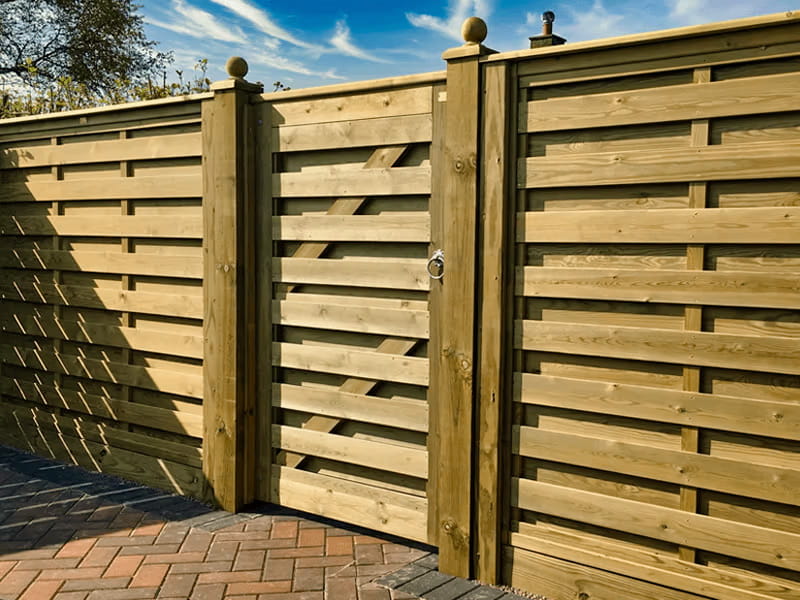
For help choosing which gate post is best suited to your gate and installation read our gate post blog
3. Adjustable Hinges
Adjustable hinges are an essential fitting on many high quality garden gates. Unlike fixed-position hinges, adjustable ones allow you to finetune the alignment of your gate after installation. This is particularly useful over time as wooden gates naturally expand or contract with changing weather conditions. Common types include:
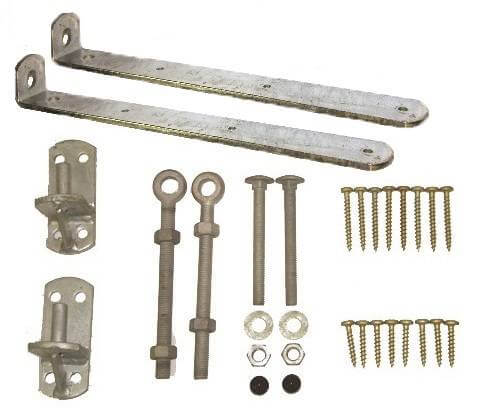
Why using adjustable gate hinges is better
As the name suggests, adjustable hinges allow for adjustments over time. Timber is a natural material and moves over time. This natural movement may affect the alignment of the gate and change how it sits. Alignment can be adjusted so the gate continues to open and close with ease throughout its life.
4. Gate Latch or Lock
Types of Gate Locks and Latches
5. Drop Bolt / Ground Bolt
Used on tall or double leaf gates, a drop bolt (also known as a cane bolt or ground bolt) keeps the gate securely in place when closed. It’s typically mounted to the inside face of the gate and slots into a ground receiver.

6. Gate Stop
This small but crucial fitting prevents the gate from swinging too far in either direction, which can help prolong the life of the hinges, stop the gate breaking its own back and maintain alignment. Double leaf gates do not have a slam post, and a centre gate stop is essential to stop the gates from swinging the opposite way to which they open.
7. Fixings: Screws, Bolts, and Washers
The integrity of a gate installation depends heavily on the quality of its fixings. Stainless steel or galvanised screws and bolts should be used to prevent rust and ensure long-term durability. All Jacksons gates are fitted with high quality, corrosion-resistant fixings as standard.
8. Caps and Finials
While mostly decorative, post caps and finials also help protect the top of wooden posts from water ingress, reducing the risk of rot. They can add a stylish finishing touch to your gate.

9. Shutting strip
A shutting strip, also known as a gate closing strip or gate stop strip, is a vertical timber batten fixed to the closing edge of a garden gate or to the gate post in the case of our garden gates. Its purpose is to provide a clean, secure stop for the gate to close against, helping with alignment, improving security, and reducing movement to help increase durability.
10. Braces
When you look at the back (non-facing side) of a traditional timber garden gate, you’ll usually see horizontal and diagonal timber pieces fixed to the frame. These are called ledges and braces, and they play a crucial role in maintaining the shape and strength of the gate over time.
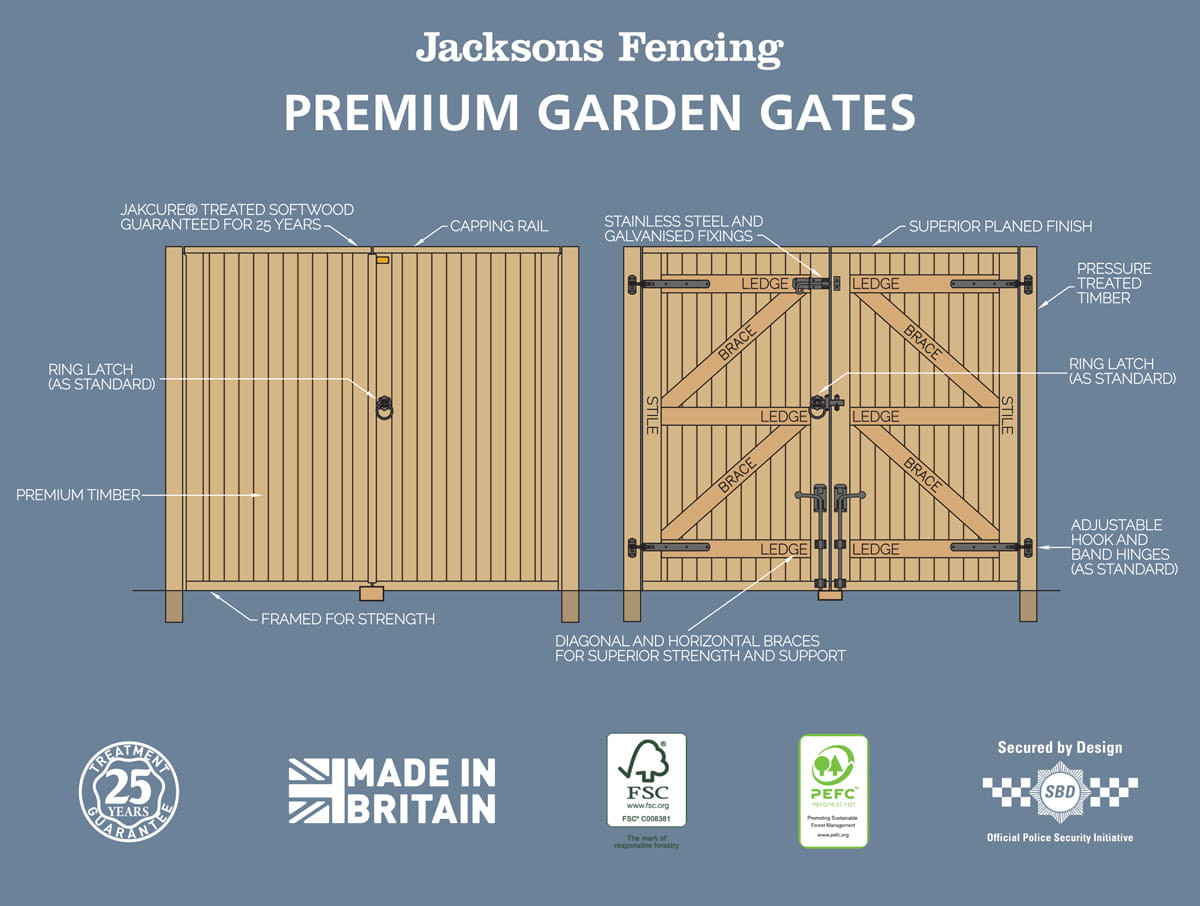
RELATED CONTENT
You may also be interested in learning about parts of a fence: